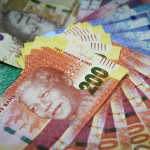 Gold slipped on Friday to end five days of increases but remained near a four-month high and is headed for a second weekly jump as a surprise move by the Swiss National Bank boosted safe-heaven demand. Copper inched up but headed for its biggest weekly decline in three years on fears of slowing demand from China and low oil prices.
Gold slipped on Friday to end five days of increases but remained near a four-month high and is headed for a second weekly jump as a surprise move by the Swiss National Bank boosted safe-heaven demand. Copper inched up but headed for its biggest weekly decline in three years on fears of slowing demand from China and low oil prices.
Comex gold for delivery in February dropped 0.52% to $1 258.2 per troy ounce by 10:38 GMT, shifting in a daily range of $1 264.0 – $1 255.2. The precious metal settled 2.45% higher on Thursday at $1 264.8, having earlier risen to $1 267.2, the highest since September 8th. Prices rallied during the past five days, the longest winning streak since June.
Gold scored its biggest daily increase this year on Thursday as investors sought safety in the precious metal amid market volatility caused by an unexpected decision by the Swiss National Bank to remove the CHF1.20 per euro cap, triggering the euro’s biggest one-day fall against the franc on history. The central bank said that the depreciation of the euro against the US dollar has led to a weakening of the franc against the greenback as well, thus the cap, which was meant to protect the franc against a too high valuation, was no longer justified.
The move sent European equities up, while bond yields and Swiss shares fell on investor concerns for the country’s economy, which is quite dependent on exports. Around 40% of Switzerland’s shipped goods and services go to Europe, and domestic companies warned that profits will be hurt by the stronger franc.
Moreover, the European Central Bank may announce a large-scale bond-buying program at its policy meeting next week that would further boost demand for bullion. However, albeit loose monetary policy is beneficial for gold, the divergence with the Federal Reserves monetary stance will further strengthen the dollar, weighing on the precious metal.
“Gold looks like the flavor of the month at the moment and has now pushed above some key downward trend lines against the dollar,” said James Gardiner, a trader at MKS Group, cited by CNBC.
The yellow metal is up 3.4% so far this week, poised to cap its biggest weekly increase since March.
Assets in the SPDR Gold Trust, the biggest bullion-backed ETF, marked their biggest daily increase since August 2011 and climbed 9.56 tons on Thursday to 717.15 tons. Changes in holdings typically move gold prices in the same direction.
Despite the nearing Lunar New Year holiday, when Chinese consumers exchange gold gifts, physical demand in Asia fell. The precious metal was trading around 1$ higher an ounce to the global benchmark, compared to premiums of $3-$4 during the previous session.
The US dollar index for settlement in March was up 0.10% at 92.705 at 10:38 GMT. The US currency gauge gained 0.28% on Thursday to 92.608, holding in a daily range of 93.300 – 91.495.
Copper
Copper rose for a second day on Friday but headed for its worst week in three years amid speculations demand will soften as global economic growth slows, while cheaper energy prices imply a decline in production costs.
Comex copper for settlement in March was up 0.45% at $2.5695 per pound at 10:38 GMT. Prices ranged between $2.5865 and $2.5405 during the day. The contract rose 2.10% yesterday to $2.5580, drifting away from Wednesdays 5-1/2-year low of $2.4235. Prices are down 6.7% for the week so far.
The industrial metal plunged on Wednesday after the World Bank cut its global growth forecast for the year to 3.0% from 3.4% previously, citing a “managed cooldown” in China and cutting its forecasts for Japan and Europe.
Copper has since then risen for two sessions on bottom-fishing, short covering and hedging.
Additionally, the People’s Bank of China reported a larger-than-expected increase in financing last month, with aggregate financing hitting 1.69 trillion yuan, compared to economists’ projections for 1.2 trillion. However, despite China’s broadest measure of credit growth topping estimates, data also showed that banks extended far less credit in December, bolstering expectations for further monetary easing.
The central bank said on Friday it will increase its re-lending quota to banks by 50 billion yuan in order to further ease credit tightness. The PBOC cut interest rates in November for the first time in two years in a bid to jump-start the cooling Chinese economy.
“Data suggests monetary policy easing in China is working, but further easing is required,” ANZ analysts, including Rajneet Kaur, said cited by Bloomberg.
Meanwhile, the International Monetary Fund said on Thursday that lower oil prices and a recovering US economy probably wont suffice to brighten the global economys outlook, fanning negative sentiment for demand for commodities.
Data earlier in the week showed that retail sales in the US contracted much more than expected, while producer prices registered their biggest drop in more than three years, playing a cautionary tone for the Federal Reserve, which has indicated it might raise borrowing costs in the second half.





